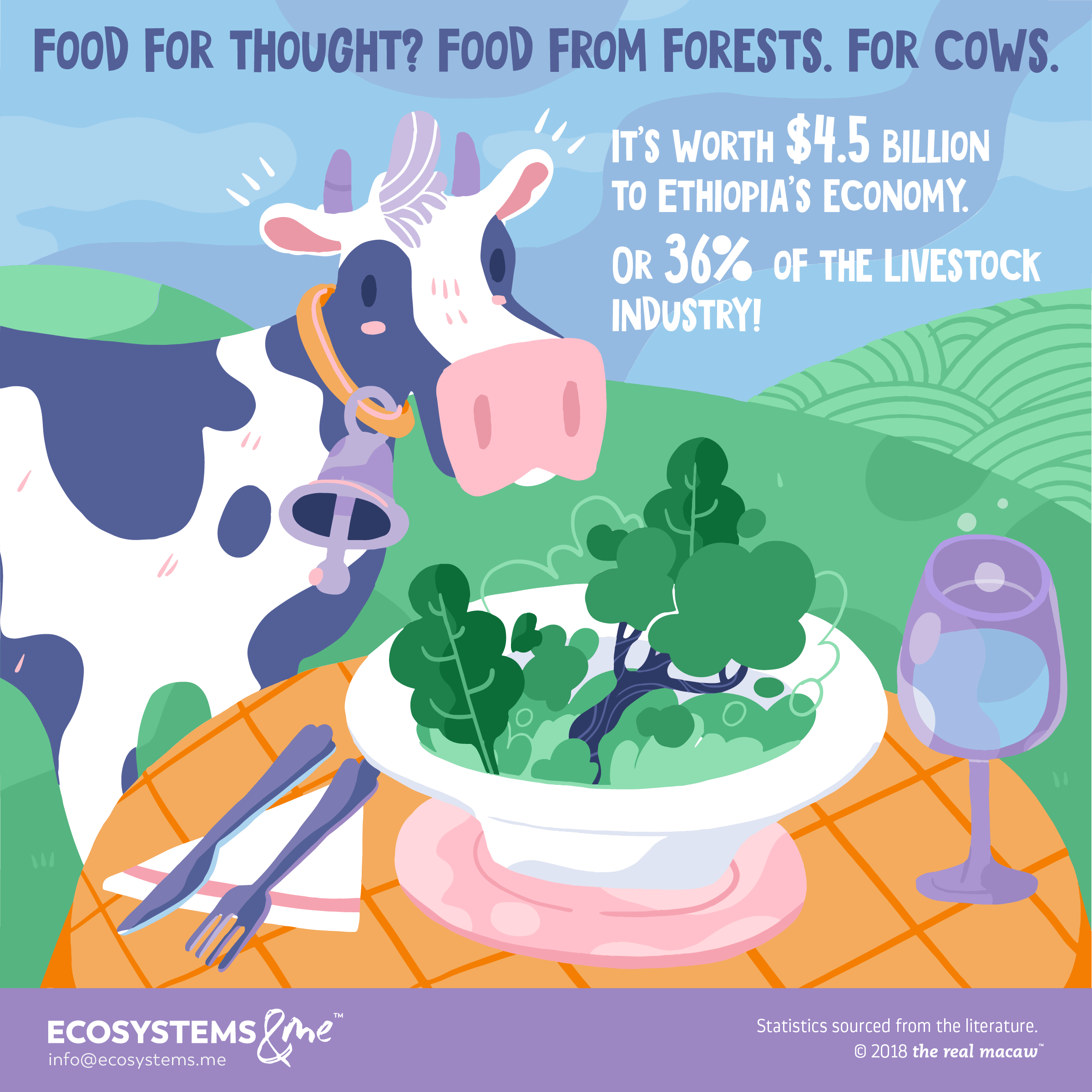
Mmm… meat. Ethiopia is pretty famous for its food, and especially its meat dishes (like key wat, or tibs. Or if you’re really feeling adventurous, there’s kitfo, which is basically a raw meat burger). So it’s probably not surprising that there are a lot of farm animals – cows, sheep, goats, etc., and apparently even camels! – in the country. Actually, almost every rural home has around 12 heads of livestock. And those animals have to eat something (so that we can eat them later, like in sega wat. Yum.). But with around 72 million rural people in Ethiopia, that’s a lot of animals.
We eat animals… but what do they eat? ?
Most livestock are grazing animals, so they’ll eat hay, grass, leaves, shoots, and other similar foods. But where does all of that come from? You can buy feed, but that can be expensive, plus raising cattle is hard work. Households generally have to spend quite a bit of time on managing their animals, but there are other things to do on a farm.
‘Free’ food from forests creates 3.5% of Ethiopia’s GDP and 1/3 of the value of the entire livestock industry.
Luckily, there are forests, so farmers can just let their animals wander around and munch on whatever they want. Around 33% of farm animals’ food needs may come from forests! (Grasslands may contribute even more, closer to 40%.)*
That saves time, and money, because farmers don’t have to buy feed or watch their cattle quite so much. And it’s also worth money – because if farmers didn’t have the forests (and grasslands) to feed their animals, they’d have to spend all that time and money.
Forests: free food for cows… and more food for Ethiopia?
Since farm animals are getting around a third of their food needs from forests, and we know how much the livestock industry is worth, we can estimate that all that free food is worth:
- $4.5 billion or so a year
- which is 36.3% of the value of the entire livestock sector…
- and 3.5% of national GDP.
All of that is for 2012-13, but it’s fairly similar for other years. Yep, that’s right: free food from forests creates 3.5% of Ethiopia’s GDP and 1/3 of the value of the entire livestock industry . And they save farmers countless hours and expenses every day. Which helps them produce more meat… for us to eat.
Without forests, farmers would have to spend a lot more time and money on their livestock. That could mean less meat… and less yummy.
So actually, you could say that forests are also supporting part of the restaurant industry, tourism, and a whole lot of other things. Because less available meat would probably mean less restaurants, less publicity and marketing, less fame for Ethiopian food, and so on. But we’ll leave it there.
*We say ‘may’ because these are estimates – based on a combination of solid numbers plus other estimates and assumptions. But they’re pretty strong.
